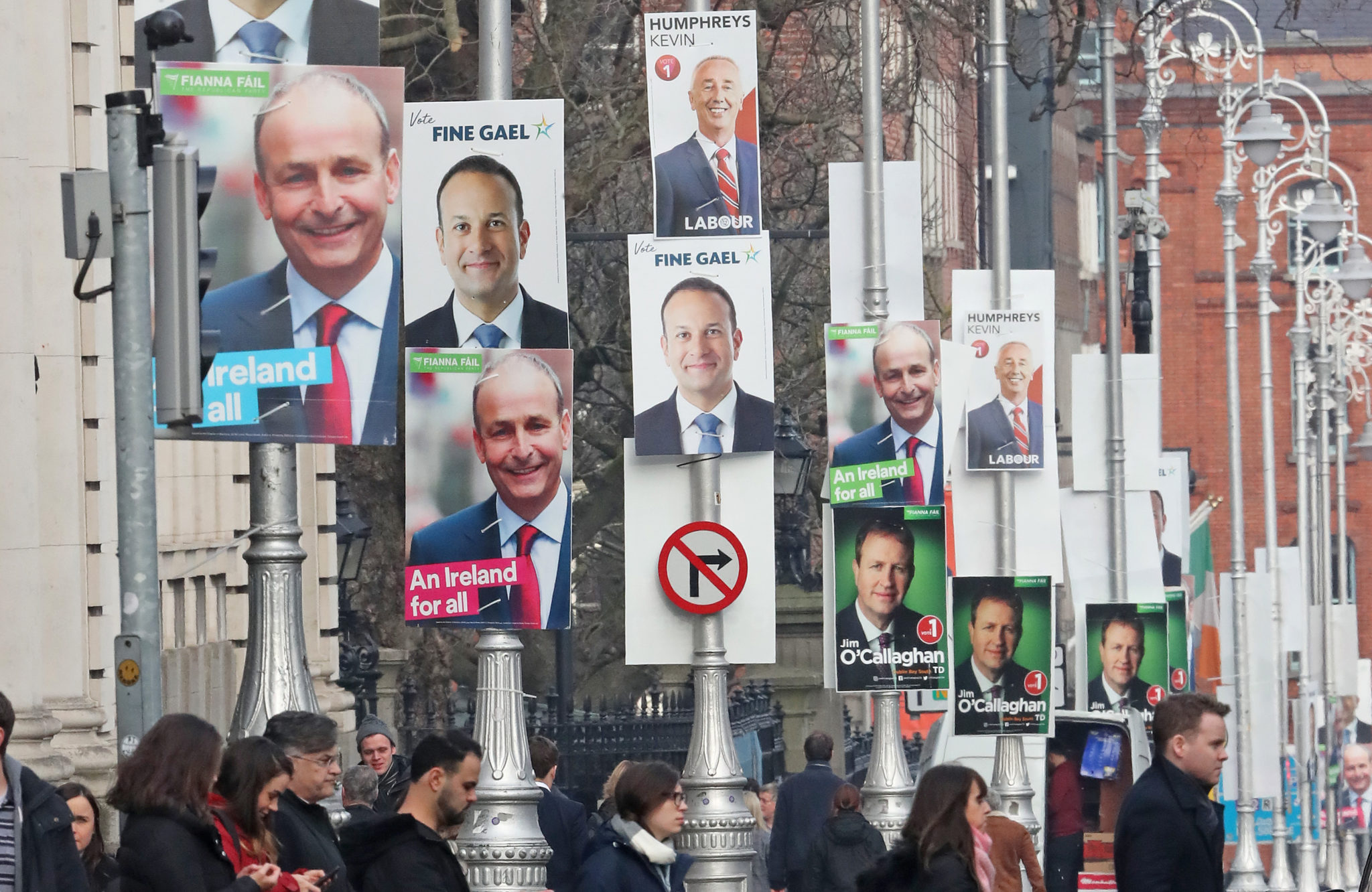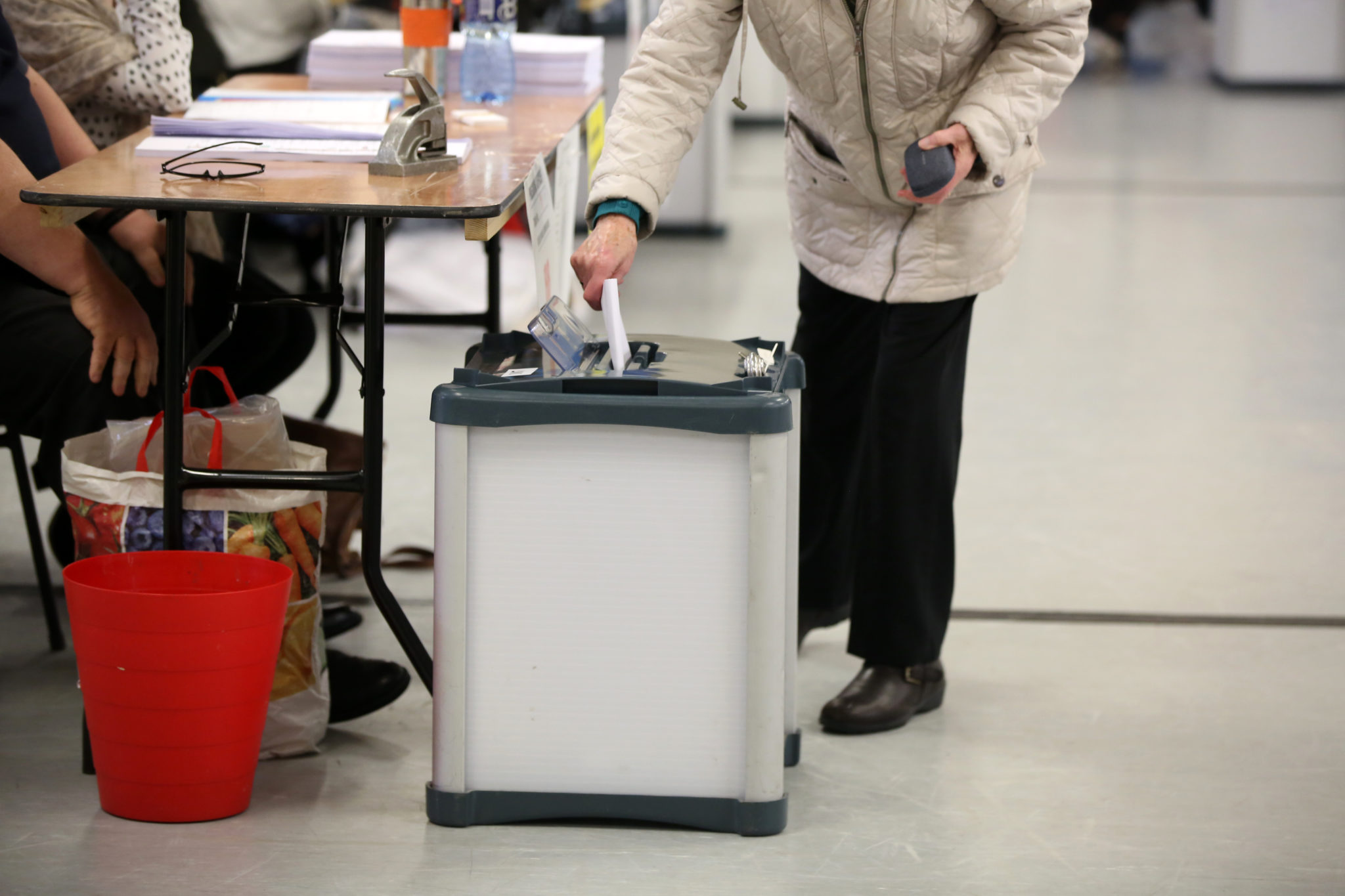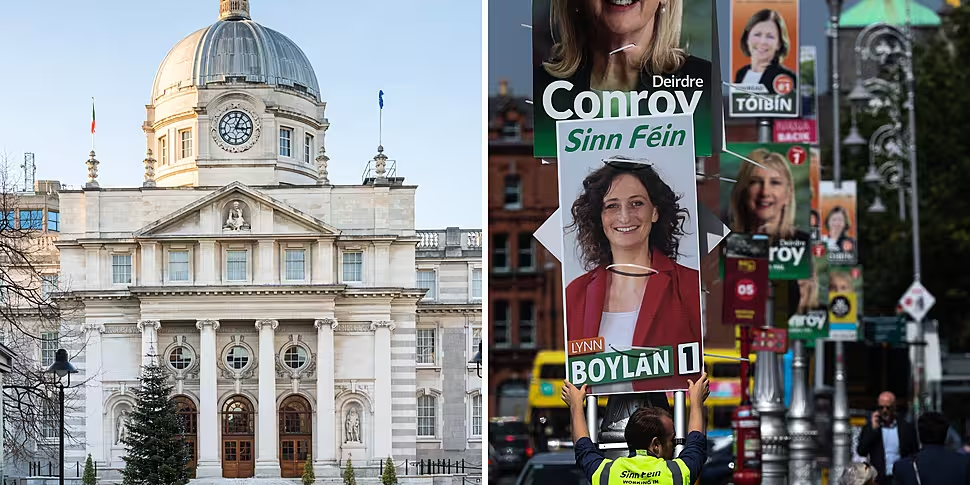“It was actually like waiting for your Leaving Cert results” says former Fine Gael TD Noel Rock as he remembers the last Commission that changed the Dáil constituency boundaries.
“You knew the thing was written somewhere, you knew your fate was sealed in a way but you just needed to see the thing to make sense of it all.”
The last Commission saw Mr Rock’s Dublin North West constituency re-drawn with Drumcondra and Glasnevin shifting electoral areas – taking about 1,400 votes the Fine Gael TD had secured in 2016 with them.
He eventually lost the final seat in the constituency to Fianna Fáil’s Paul McAuliffe by just 423 votes.
 General Election posters outside Government Buildings in Dublin.
General Election posters outside Government Buildings in Dublin.That’s the risk all TDs now face at the next election as tomorrow’s boundary redraw looms large.
This is set to be one of the biggest in the history of the State with up to 21 extra TDs to be added to the ranks of the Dáil.
The number is based on the Constitutional limit which requires there to be a TD for every 20,000 to 30,000 people as measured by the Census.
While there’s a huge amount of uncertainty about how exactly the Commission is going to get to that number, there are a few things we do know.
For one, the actual range of the Census means there will be at least 11 and up to 21 new TDs. The Commission can also only recommend three, four and five-seat constituencies – even though some politicians argued for six-seaters in certain areas.
The Commission has also been told to avoid breaching county lines where possible – though this doesn’t always happen.
While the 2017 Commission managed to remedy county breaches in Carlow, Cavan, Kildare and Clare last time around, it created new ones in Laois, Meath, Offaly, Roscommon and Tipperary.
Commission
There will be noses out of joint no matter what the Commission recommends but they have some particularly difficult calls to make, particularly in the north-east of the country.
One TD remarked to me that the entire process will hinge on where the Commission decided to start its work. Like picking a fantasy football team – you take your most important player first and build the rest around it.
Dublin Fingal
I think the Commission may well have started with the headache of Dublin Fingal.
It is already a five-seater so there’s no room to grow there. It’s one of the fastest-growing constituencies in the country with a 12.2% increase in population between 2016 and 2022.
It is also one of the youngest constituencies in the country as young families flock to newly-built housing estates in the area.
It also has the highest number of people per TD in the country at 34,138 for every TD.
 People vote in the Fingal Constituency of Dublin in the By-Election 2019. Image: Sam Boal/Rollingnews
People vote in the Fingal Constituency of Dublin in the By-Election 2019. Image: Sam Boal/RollingnewsClearly, Fingal will have to be split to meet the Constitutional limit but how they do that is anyone’s guess.
Among the theories is the idea of making two three-seat constituencies, a north and south Fingal, with some redrawing.
A version of this could see Howth brought into a south Fingal constituency from Dublin Bay North to rebalance that constituency.
You could also see some population shift with the Dublin West constituency to reduce the size of one of them.
Essentially it would be a south Fingal constituency including Swords, Malahide, Portmarnock and Howth balanced against a new constituency bordering Meath, centred around Balbriggan, Skerries, Rush and Lusk.
Local reps are keen for Swords not to be divided and there has been talk of a four-seat southern constituency and a three-seat northern one – an increase of two seats on the current arrangement.
Louth and Meath East
Another headache for the Commission is directly above Fingal and what to do with Louth and Meath East.
A large part of Meath is in the Louth constituency around Drogheda with Louth already a five-seater.
While some locals feel disenfranchised not being able to vote in Meath, others think the area around Drogheda should be kept in one electoral area as they all operate in the hinterland of the town.
The cleanest solution here may be a transfer of some of that territory back to an expanded four or five-seater Meath East constituency, reducing the Louth population enough to allow it to stay a five-seater.
Dublin
Overall Dublin should get between four and six extra TDs in the redraw with Census figures suggesting 49 TDs is the correct number, up from the current 45.
An extra seat is warranted between Dublin-Rathdown and Dún Laoghaire – and it is worth noting that having it in Rathdown would be a big boost for the Green Party’s Catherine Martin, who will face a battle in a tough three-seater.
Meanwhile, there’s room for an extra seat between Dublin South-Central, Dublin South-West and Dublin Mid-West.
Cork
Cork could see two or three extra TDs.
The two Cork city constituencies are both significantly above the population limit as is Cork East.
Cork North-West and South West are only slightly over the population limits, making it likely some changes to the boundaries will slightly crop the population there to add it onto one of the city bases.
I would expect at least one extra city seat and one county seat to be added in Cork.
Rural Ireland
Lots of rural constituencies may face being chopped in half as part of this review.
The likes of Tipperary, Donegal and Kerry could all be made into two or three-seaters from their existing status with some boundary changes to make up the numbers.
Parts of South Donegal like Ballyshannon could come out of Sligo Leitrim and back into a Donegal South constituency.
Laois/Offaly is another constituency which could be split again.
It would be a lot of change for that area which existed as Laois/Offaly for decades before being split at the 2016 election then reformed in 2020.
Wicklow and Wexford
An interesting situation also may unfold between Wicklow and Wexford. Wexford faces the possibility of being split for the first time as it’s an existing five-seater over the population limit.
Wicklow is a really interesting case where there’s been a population boom in the north of the county which has reflected itself in who the county elects.
All five TDs are from either Greystones or Bray with the south and west of the county not getting a look in.
Meanwhile some have suggested a north and south Wicklow, and the carnage that would present for the incumbents, it’s unlikely south Wicklow has a large enough population to warrant its own three-seater.
Between Wicklow and Wexford there’s a population base for 11 TDs where there are currently 10.
Could that then suggest a four seat north Wicklow constituency, a three/four-seat constituency of south Wicklow and north Wexford, and a four-seat south Wexford?
Kildare
Kildare North saw the second highest population growth in the country between 2016 and 2022 at 12.4% - behind Meath East in the number one spot.
Expect a fifth seat to be added here, perhaps taking some population from Kildare South to allow it to remain a four-seater.
There needs to be an extra seat between Galway and Roscommon which could come through a redraw of Galway East to make that a four-seater constituency, taking population from Galway West or Roscommon Galway.
There’s also an argument for an extra Dáil seat between Meath West and Longford Westmeath.
Ones to watch
Some constituencies to watch include Cavan-Monaghan which is bang on the 30,000 population limit but contains some wards from Meath within the constituency.
It is unlikely to change significantly if the Commission isn’t futureproofing things, but could be impacted by changes to Meath.
Carlow-Kilkenny is another constituency which could be split into two three-seaters of Carlow and Kilkenny.
Waterford is over the population limit though not significantly, but is likely to build on the almost 10% population growth between 2016 and 2022.
Could the Commission revisit the often-had row over Ferrybank and some of south Kilkenny coming into the Waterford constituency to make it a five-seater?
We’ll find out on Wednesday.
Higher limit
Overall, I think the Commission will stick close to the higher limit of the number of TDs they can recommend, with between 16 and 18 new seats being created.
It might be bringing the Leaving Cert sweats out in politicians over their individual seats and the review will likely have a big impact on the next election.
If it turns out there are more three-seater constituencies in rural Ireland when people go to the polls, that will give a big advantage to Sinn Féin.
Small constituencies favour big dominant parties. It’s simple maths - if you have a three-seater constituency, the quota to be elected will be 25%.
Whereas in a five-seater constituency it would be 16.6%, which can favour smaller parties sneaking into the final seats.
It might not prove a massive difference over the course of an election given how geography-based the Irish electoral system has traditionally been - but it could have a big impact in some areas.
Take Donegal for example. Sinn Féin won two of the five seats there in 2020 and at the next election would have a chance to win a third.
But if Donegal is two three-seat constituencies next time and Sinn Féin can equal or better the 45.1% of the vote it got there in 2020, then suddenly the party is in with a chance of winning four seats instead of three.
It’s those small gains and small margins that the next government will be built on, especially as Sinn Féin needs to at least double its amount of Dáil seats to be in with a chance of leading the next government.









